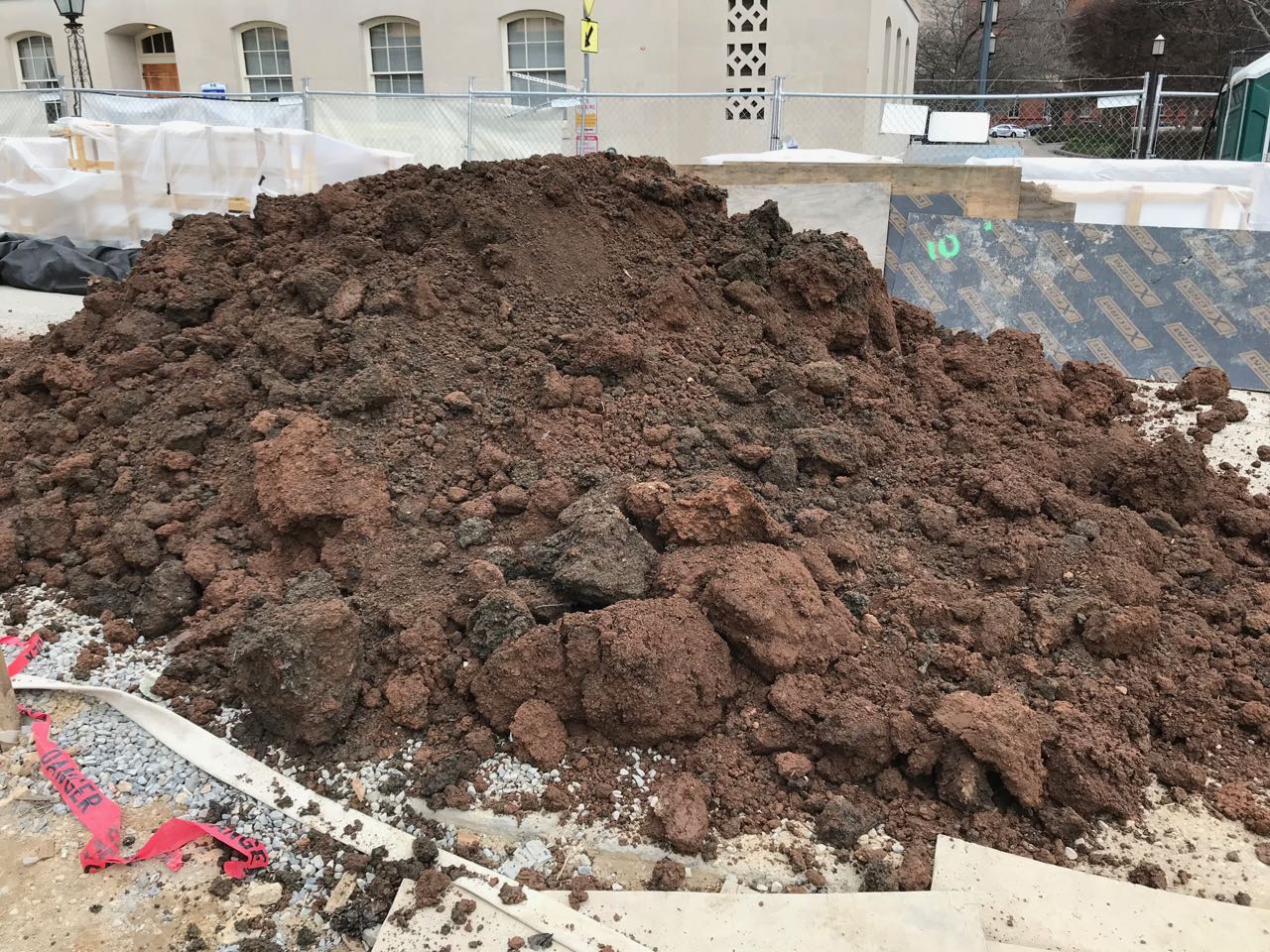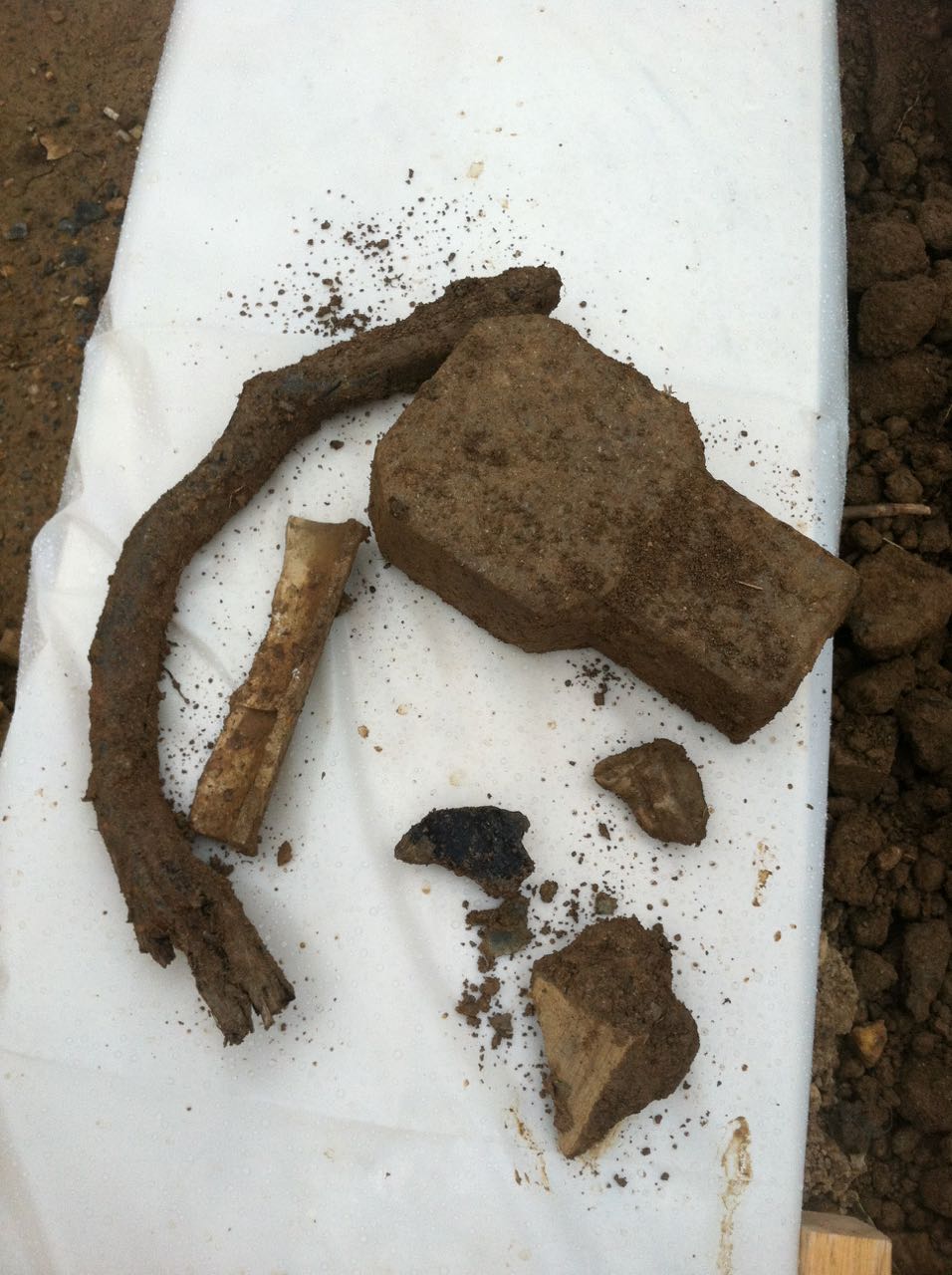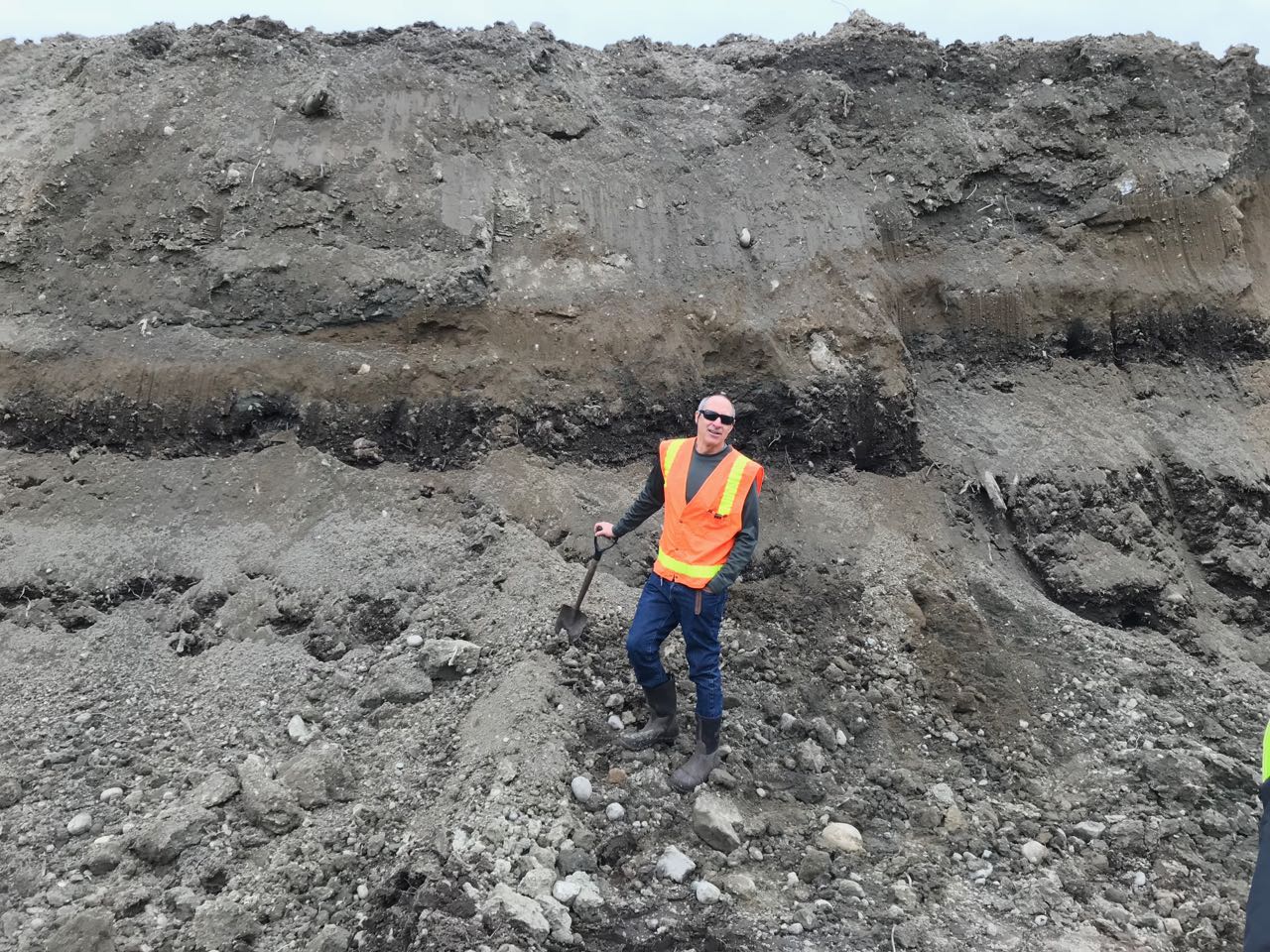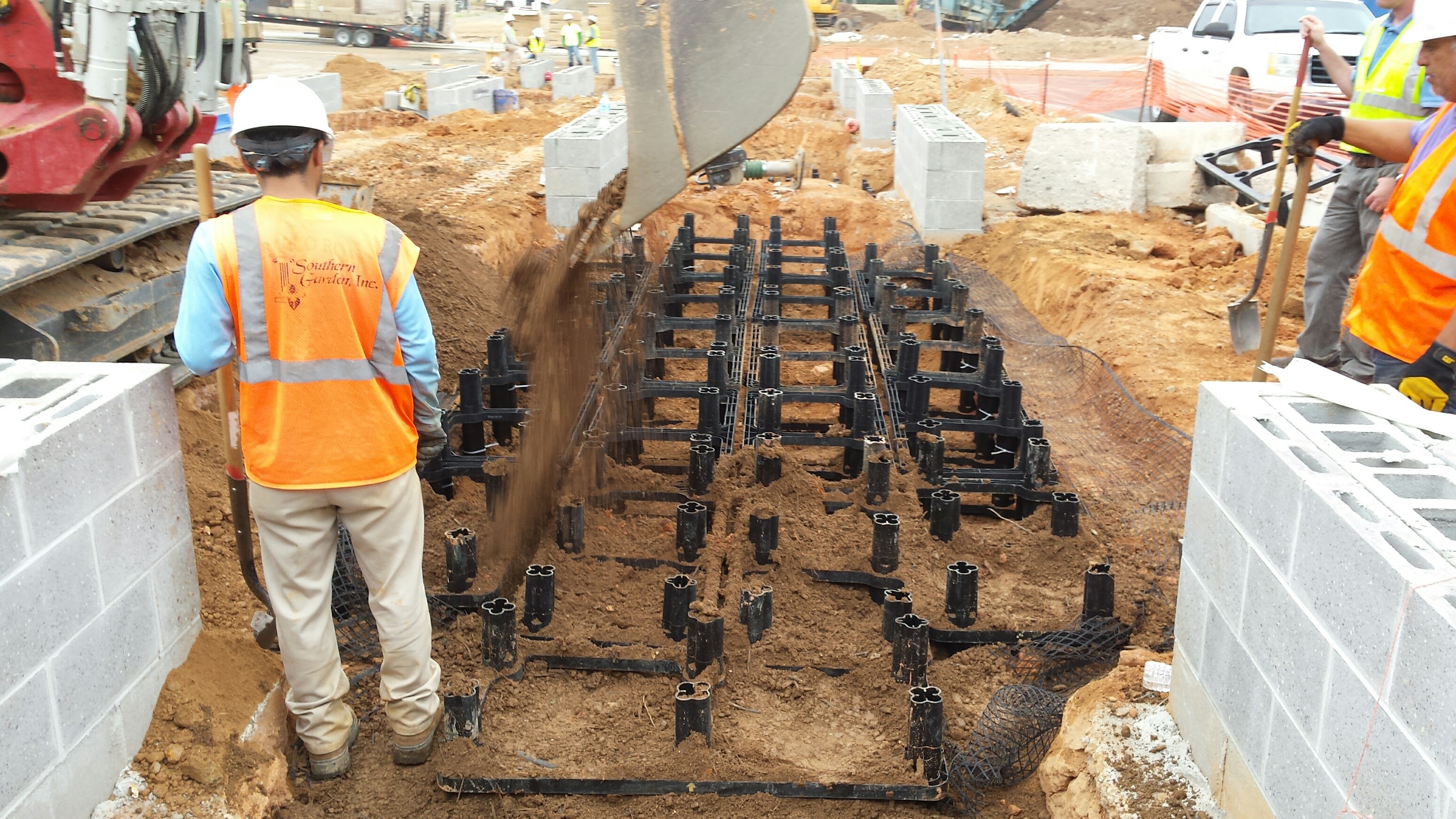Over the last several years, DeepRoot has written about reusing urban soils as a planting medium. To date, the following have been covered via the DeepRoot blog:
- Reusing Existing Urban Soil for Planting
- Urban Soil Assessment and Reuse: Part 1 and Part 2
- Search for the “Perfect” Soil Specification
The articles above create a basis for the argument that many existing soils in urban areas can be used for planting, including sub soils and even soils otherwise considered fill material. Since the posting of the first of these soil blogs in 2015, some significant studies have been completed that test this theory and many projects have been built that demonstrate proof of concept. Central to the concept are the following assumptions:
- The primary limitation to planting in urban soils is over compaction and low soil organic matter, both of which can be remediated.
- Retaining clumps, clods, and peds in the soil as it is excavated, graded, or remediated is a critical part of the urban soil reuse process and is important to long-term soil health.
- Soils fairly high in clay and silt can be utilized as long as the soil retains clumps, clods, and peds. Soils with clay over 30% may be the best soil for this application.
- Gravel, rock, and construction debris in the soil is not limiting to plant growth at levels of 15% to 30%. Above 30% the primary limitation is simply reduction in plant usable soil volume.
- Soil pH is often a limiting factor, however, high pH can be less limiting by selection of high pH tolerant plants. Concrete and other alkaline material debris in the soil may contribute to pH limitation.
- Other plant limiting soil chemistry needs to be confirmed with a soil test.
- Soil drainage below remediated soil must be confirmed. Subsurface drain lines can be added to solve drainage problems.
Research
Significant research has been conducted related to using urban soils and subsoils. The results create a strong endorsement of the concept and support the critical importance of the retention of soil clumps, clods, and peds.
Susan Day at Virginia Tech has completed the most exhaustive work in this area. She developed and tested a process called Soil Profile Rebuilding (SPR) in which compacted subsoil was loosened with a backhoe bucket (subsoiling) to reduce compaction to a depth of 24” while incorporating compost at a rate of about 15% by volume. The test site had previously been stripped of topsoil. The remaining subsoil was mechanically compacted to 1.95 mg/m3 or greater than 95% standard proctor density. 4 inches of compost was spread over the compacted soil. A backhoe then dug into the soil to a depth of 24 inches and lifted the soil to a height of 3-6 feet, dropping it back to the ground. Resulting clumps, larger than 12 -18 inches, were further broken apart. The subsoiling process produced soil with many soil clumps and veins of compost found between the clumps. After the loosening process, approximately 4 inches of topsoil was spread over the loosened soil and tilled to a depth of 5-6 inches. Other test plots in the study include an undisturbed control, where 4 inches of topsoil was spread over the compacted subgrade and 4 inches of topsoil was tilled into the compacted subsoil. Five species of trees were planted and monitored for 6 years to record growth. The SPR site had the greatest tree growth, even exceeding the trees on the undisturbed soil site. The effect of the SPR was not reduced with time.
Bryan Scharenbroch tested low quality soils that retained soil clumps with added compost, with and without added sand, against standard screened manufactured soil mix design. Tree growth in the one-year study did not vary much when there was sufficient water. Tree growth indicators in the soils with no added sand improved more than the manufactured soil when the trees were stressed by low water applications.
Barrett Kays in North Carolina tested soil loosening of heavy clay soil (30-40% clay) using methods similar to the Day SPR experiment but without the added compost or topsoil. Turf was grown on the loosened clay soil. The intent was to see if soil loosing of clay soil would make these soils usable for storm water management applications. The experiment absorbed up to 3” of rainfall during the 6-year study and outperformed other options in the experiment. Grass roots grew through the entire 12” deep loosened profile.
Nancy Sonti of the USDA Forest Service tested tree reforestation in various disturbed urban soils including fly ash soil. The only soil that did not produce good tree growth was the sandy soil site.
Each of these experiments supports the theory that urban subsoils, loosened to reduce compaction, can support excellent tree growth. Clay and silt loam soils will perform well and the retention of soil clumps, clods, and peds are important to the process of soil rehabilitation. Adding compost and/or an infusion of better topsoil pays greater dividends. The research also shows that soils with high clay content can function in rain water management systems, although this conclusion likely needs more testing to convince engineers.
Lessons learned
Over the last three years many projects constructed throughout the US have reused urban soils. These projects provide insight into the practicality and acceptance of the approach. Discussions with several design firms, soil suppliers, and contractors suggest that the concept works well and should be scalable at industrial levels. Interpretation of acceptable limits of debris, soil chemistry, clay, silt, and sand seem to be somewhat regional. When deciding whether soil reuse is appropriate for a specific project and while creating and adapting specifications, designers need to talk with soil suppliers to understand available soil types and need to understand the local site conditions. The following were observations across the various project locations.
- Naturally occurring stock piles of usable soil are available in most markets. Often these are the soils that many soil suppliers are using as base material for manufactured soils or are soils that are collected as fill soil. Soil suppliers generally feel that obtaining adequate soil to support a large-scale acceptance of the soil reuse concept in their market area is possible. They can simply adapt the types of soil they accept and accept greater quantity of what is now considered fill materials.
- Reusing existing urban soil or importing subsoils/compost as the planting medium will reduce soil cost. The material is either free at the site or low cost imported material. Imported used material may use less energy to process and ship if it can be sourced from nearby construction sites.
- At tight urban sites, reusing soil onsite is technically possible but may be constrained by lack of space to store material. However, it is possible to use areas of existing soil for equipment and material storage, parking, and laydown space and then loosen the compaction soil during final grading.
- Contractors will need to be provided with educational tools before they fully accept the concept. They often worry that the heavier soils will not work well but find them reasonable to move, grade, and compact once the installation process has begun.
- Soil settlement has not been a problem in older installed projects. Plant growth has been very good.
- Soils drain well during and after installation. One project in the Mid-Atlantic region installed easily during a very wet spring.
- In areas where sandy soils are plentiful, particularly the coastal band of sandy soils from the Boston area and New Jersey to Texas, soil sources with clumps and peds are not easy to find. Local sandy soil that has naturally formed SOM above 1.5% are still usable with small amounts of added compost to bring the soil up to about 2.5-3% organic matter. Plantings in these soils should be species-adapted to sandy soils.
- Tilling 3 inches of compost or 4 inches of quality topsoil tilled into the top of bed areas to form an A horizon over loosened low SOM subsoils will produce an excellent soil profile.
Reuse of urban soils, either available at the site or imported, is proving to be an acceptable alternative to manufactured soils. The material may be superior to current practice and are highly sustainable. Moving away from manufactured soil will reduce the environmental damage from sand mining and is a material with lower embedded energy. Plant health will be improved while irrigation requirements reduced. Reuse of any material is an important concept to the principles of sustainability.
References
Layman, R. (2016) Day, S. Mitchell, Chen, D. Y. Harris, R. Daniels, W. Below Ground Matters: Urban soil rehabilitation increases tree canopy and speeds establishment. Urban Forestry & Urban Greening, 16 25-35.
Scharenbroch, B. (2015) Curry, M. Urban, J. Soil or Sand for Planting: Research and the Soil Debate Continued; Presentation ASLA Annual Meeting, Chicago, IL, USA.
Kays, B. (2014) McLaughlin, R. Mohammadshirazi, F. Brown V. Controlling Storm Water Quality by Amending Soils for Enhanced Infiltration on Construction Sites in North Carolina – Final Report. Clean Water Management Trust Fund. April 28, 2014.
Sonti, N. (2016) Pregitzer, C. Hallet, R. Variability in Urban Soils Influences the Health and Growth of Native Tree Seedlings, Ecological Restoration 34:2.









Leave Your Comment